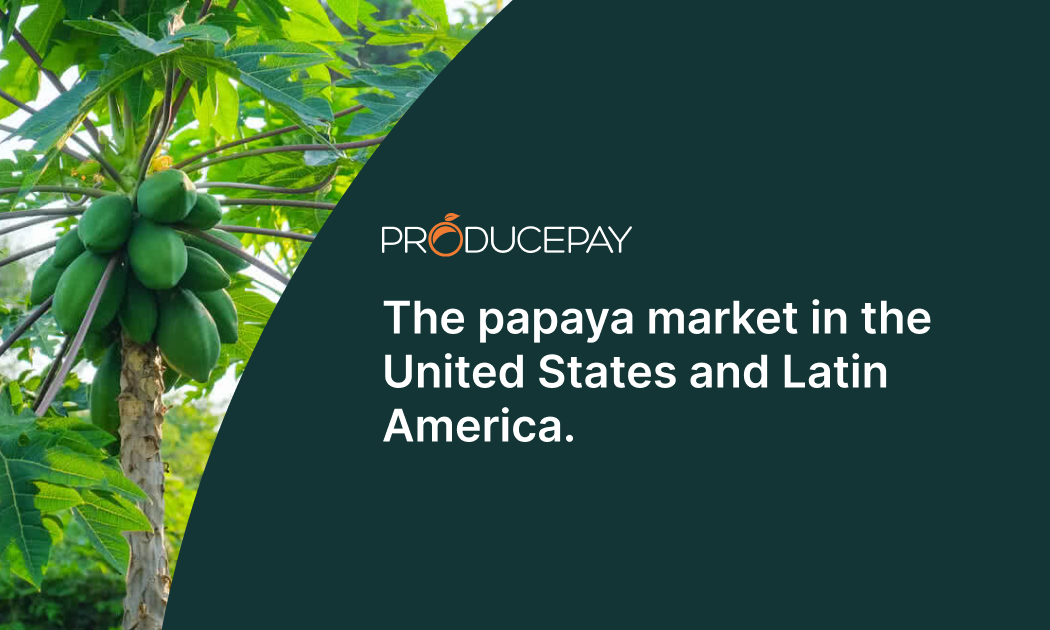
The papaya market in the United States and Latin America.
Papaya is a popular tropical fruit in Latin America and increasingly in demand in the United States, which has boosted the growth of the industry in both regions.
In Latin America, countries such as Brazil, Mexico, Costa Rica, and the Dominican Republic are the main producers and exporters of papaya, providing an important source of income and contributing to the development of local economies in these countries.
In the United States, papaya is an increasingly popular product, with demand steadily growing in recent years. Most papayas imported to the United States come from Mexico, followed by Guatemala and Brazil; however, there is also local production of papaya in Hawaii.
Volume of papaya imported by the United States
In 2022, the U.S. market imported 233,728 tons of fresh papaya, a growth of 5.8% compared to 2021 and a massive increase of 26.4% compared to 2020.
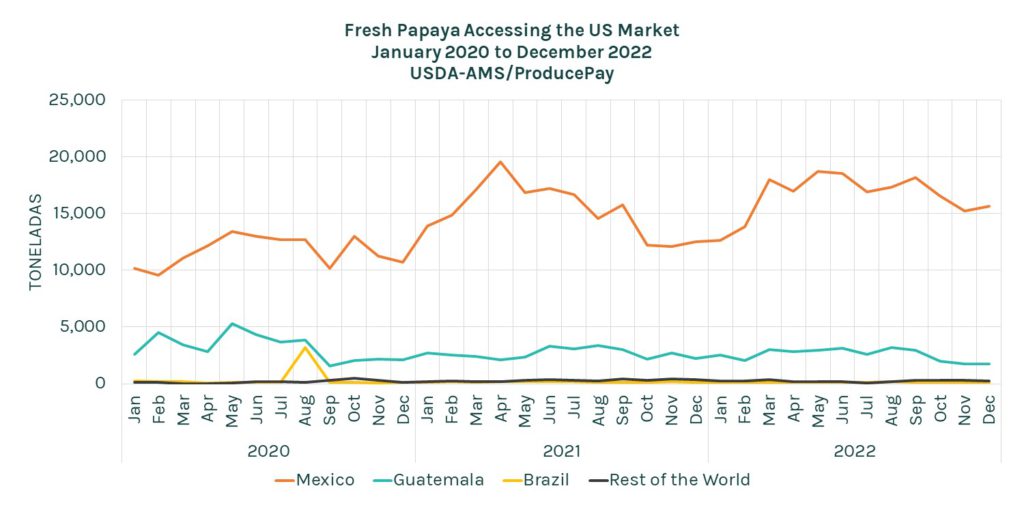
Mexico is the leading supplier of papayas to the United States, with 198,639 tons in 2022, representing 85% of total U.S. imports.
The above graph shows that Mexican imports occur throughout the year, with the lowest volumes in October, November and December.
Guatemala, in second place, accounted for 13%, with 30,690 tons. This is a decline from 2021, when it shipped 32,021 tons, and 2020 when the total US export volume was 38,322 tons.
Price of papaya imported by the United States
Papayas are primarily sent to the United States through 3 packages: 3.5 kg containers, 30-35 lb cartons, and 35-40 lb cartons. For 30-35 lb cartons, the price has varied between $12.63 and $23.80 from 2020 to 2022, showing constant monthly variations.
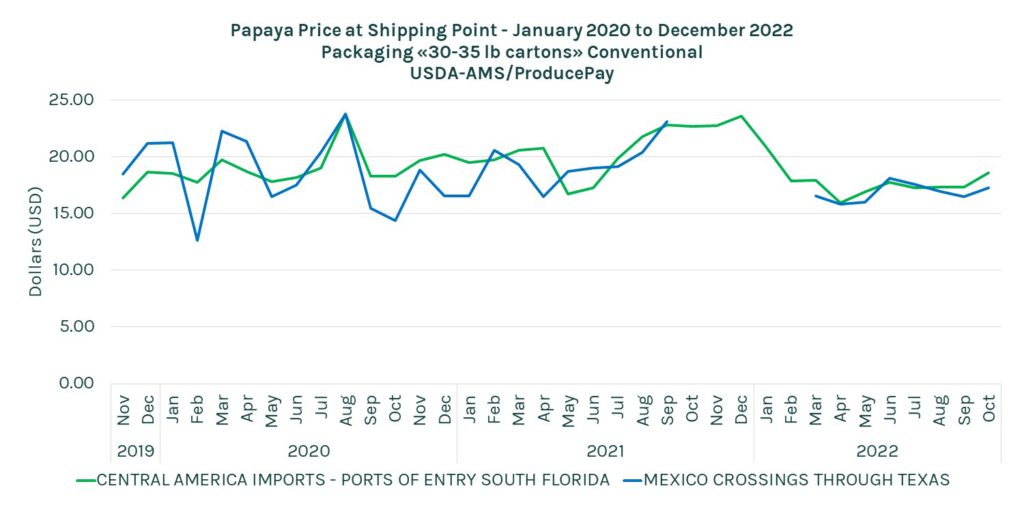
The average price for 2022 was $17.96, while for 2021, it was $19.59, a decrease of 8.3%. However, the price had fewer variations in 2022 than in previous years when significant peaks were observed.
Papaya production and exports in Mexico
Mexico ranks 5th among the world’s largest papaya growers, accounting for 8.0% of total world production in 2021, with an average annual yield of 58.2 tons per hectare, from a total cultivation area of 19,509 hectares.
In 2021, Mexico harvested 1,135,888 tons of papaya, an increase of 1.7% from 2020. Oaxaca, Colima and Chiapas are the primary producers, with 353,708 (31.2%), 193,773 (17.1%) and 157,957 (13.9%) tons grown, respectively.
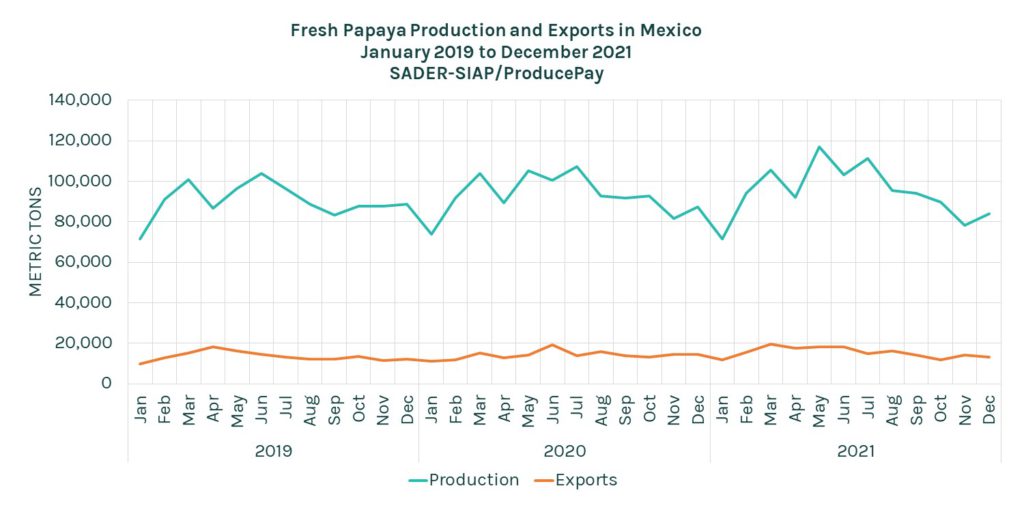
Of the total volume produced, 185,327 tons, or 16%, were exported, mainly to the United States, although this number differs slightly from statistics reported by the USDA.
Papaya prices in Mexico
In 2022, the average annual price of premium quality maradol papaya marketed in Mexico was # dollars per pound, an increase of 9.8% from # dollars per pound in 2021.
In 2022 the month with the highest price per pound was December with 0.46 dollars, while in July, it was sold at 0.41 dollars, the month with the lowest price.
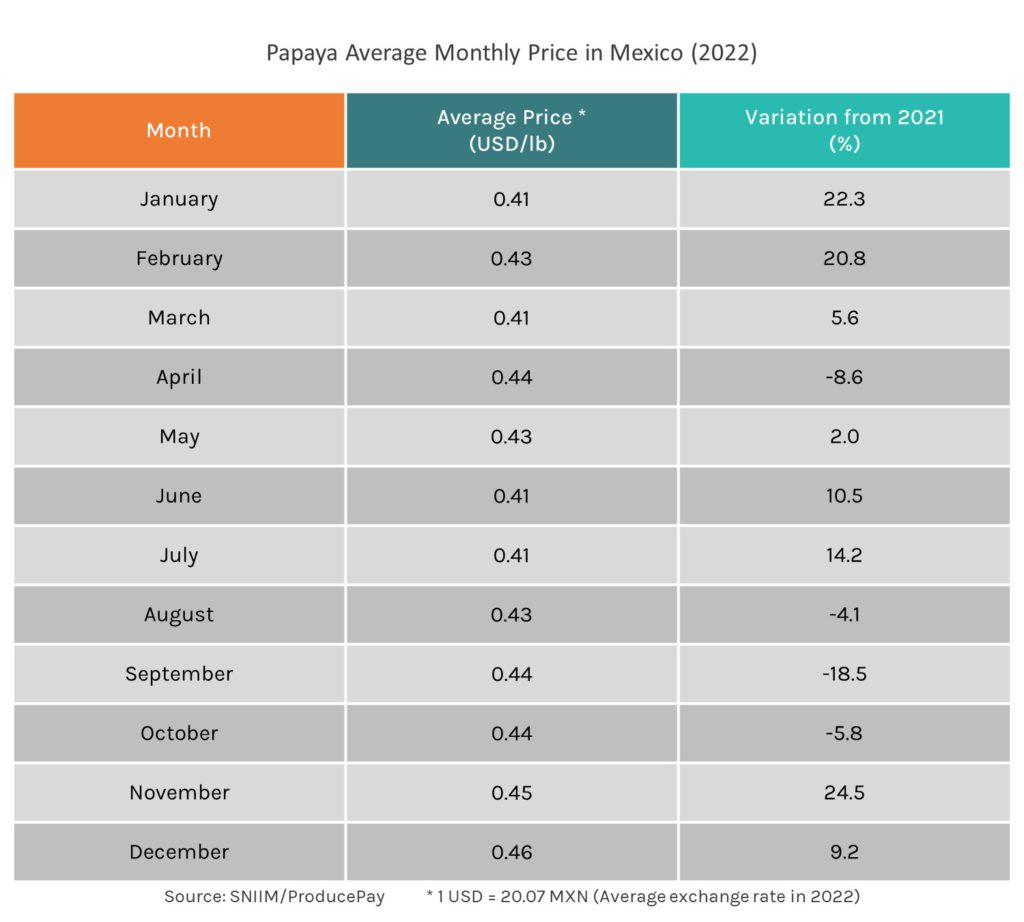
The months with the highest percentage increase in 2021 were February, April, March, January and June, with prices reaching and exceeding a 10% increase in all of those months.
Main producers in Central and South America
According to FAOSTAT data, Brazil, Peru and Colombia are the countries that produce the most papaya in Central and South America. From 2019 to 2021, Brazil and Peru slightly increased their volume, while Colombia’s harvest volume fluctuated up and down.
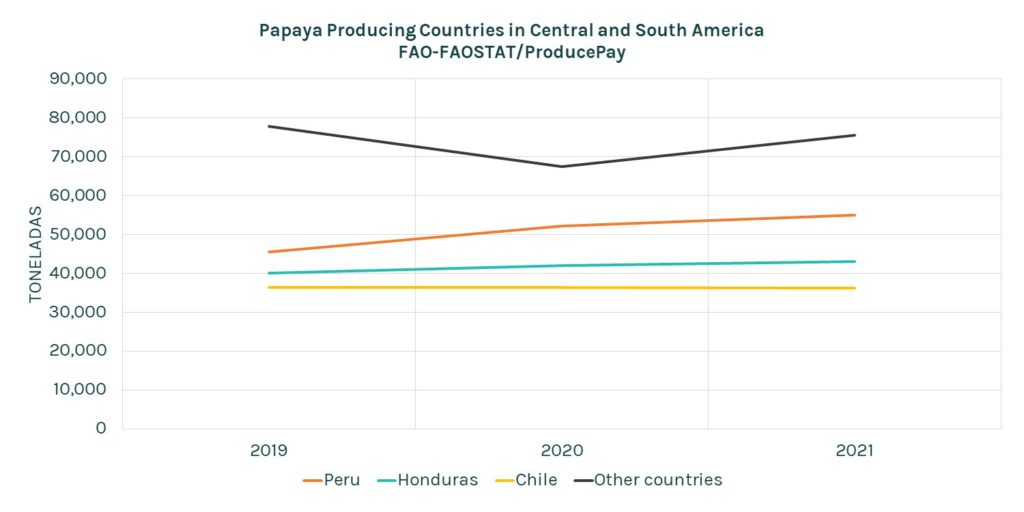
Notably, Brazil exports minimal volume to the United States, even though they’re the region’s largest producer.
Learn more about the current papaya situation
Download our 2023 white paper on the state of papaya production and marketing to learn everything you need to know about the papaya market and have the information your business needs. Click here to download it today.
Sources: USDA-AMS, FAO-FAOSTAT, SADER-SIAP, SE-SNIIM

